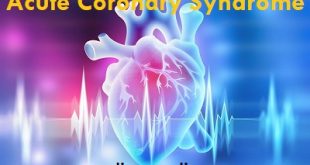Overview – Anaphylaxis
Anaphylaxis is a serious, life-threatening allergic reaction. The most common anaphylactic reactions are to foods, insect stings, medications, and latex.
If you are allergic to a substance, your immune system overreacts to this allergen by releasing chemicals that cause allergy symptoms. Typically, these bothersome symptoms occur in one location of the body. However, some people are susceptible to a much more serious anaphylactic reaction. This reaction typically affects more than one part of the body at the same time.
Anaphylaxis requires immediate medical treatment, including a prompt injection of epinephrine and a trip to a hospital emergency room. If it isn’t treated properly it can be fatal.
Pathophysiology of anaphylaxis
Interaction of antigen with IgE on basophils and mast cells triggers the release of histamine, leukotrienes, and other mediators that cause diffuse smooth muscle contraction (eg, resulting in bronchoconstriction, vomiting, or diarrhea) and vasodilation with plasma leakage (eg, resulting in urticaria or angioedema).
Anaphylactoid reactions
Anaphylactoid reactions are clinically indistinguishable from anaphylaxis but do not involve IgE and do not require prior sensitization. They occur via direct stimulation of mast cells or via immune complexes that activate complement.
The most common triggers of anaphylactic reactions are
- Iodinated radiopaque contrast agents
- Aspirin and other NSAIDs
- Opioids
- Monoclonal antibodies
- Exercise
What causes the anaphylaxis?
Anaphylaxis is a severe, whole-body allergic reaction to a chemical that has become an allergen. An allergen is a substance that can cause an allergic reaction.
After being exposed to a substance such as a bee sting venom, the person’s immune system becomes sensitized to it. When the person is exposed to that allergen again, an allergic reaction may occur. It happens quickly after the exposure. The condition is severe and involves the whole body.
Tissues in different parts of the body release histamine and other substances. This causes the airways to tighten and leads to other symptoms.
Some drugs (morphine, x-ray dye, aspirin, and others) may cause an anaphylactic-like reaction (anaphylactoid reaction) when people are first exposed to them. These reactions are not the same as the immune system response that occurs with true anaphylaxis. But, the symptoms, risk of complications, and treatment are the same for both types of reactions.
Anaphylaxis can occur in response to an allergen. Common causes include:
- Drug allergies
- Food allergies
- Insect bites/stings
Pollen and other inhaled allergens rarely cause anaphylaxis. Some people have an anaphylactic reaction with no known cause. It is life-threatening and can occur at any time. Risks include a history of any type of allergic reaction.
Risk factors
There aren’t many known risk factors, but some things that might increase your risk include:
- Previous history. If you’ve had anaphylaxis once, your risk of having this serious reaction increases. Future reactions might be more severe than the first reaction.
- Allergies or asthma. People who have either condition are at increased risk.
- Certain other conditions. These include heart disease and an abnormal accumulation of a certain type of white blood cell (mastocytosis).
Signs and Symptoms of anaphylaxis
Anaphylaxis symptoms occur suddenly and can progress quickly. The early symptoms may be mild, such as a runny nose, a skin rash or a “strange feeling.” These symptoms can quickly lead to more serious problems, including:
- Trouble breathing
- Hives or swelling
- The tightness of the throat
- Hoarse voice
- Nausea
- Vomiting
- Abdominal pain
- Diarrhea
- Dizziness
- Fainting
- Low blood pressure
- Rapid heartbeat
- Feeling of doom
- Cardiac arrest
People who have had a severe allergic reaction are at risk for future reactions. Even if your first reaction is mild, future reactions might be more severe. That’s why it’s important to carry self-injectable epinephrine if you are at risk.
A patient would not necessarily experience all of these symptoms in the same episode.
There are several different types of reaction which could occur:
- Uniphasic – these come on quickly and symptoms get rapidly worse, but once treated, the symptoms go and don’t return.
- Bi-phasic – these are reactions which may be mild or severe to start with, followed by a period of time when there are no symptoms, and then increasing symptoms with breathing and blood-pressure problems.
- Protracted anaphylaxis – this can last for several days and may need treatment in hospital for some time.
Complications of anaphylaxis
Complications from anaphylaxis are rare, and most patients completely recover. Myocardial ischemia may result from hypotension and hypoxia, particularly when underlying coronary artery disease exists. Ischemia or arrhythmias may result from treatment with pressors. Prolonged hypoxia also may cause brain injury. At times, a fall or other injury may occur when anaphylaxis leads to syncope.
Respiratory failure from severe bronchospasm or laryngeal edema can cause hypoxia, which could lead to brain injury if prolonged.
Diagnosis
Tests used in the diagnosis of anaphylaxis may include:
- Medical history
- Physical examination of symptoms and signs
- Detailed questioning about what led up to the event
- Blood tests to check for the presence of particular antibodies
- Skin prick tests to confirm or rule out suspected triggers
- Tests to exclude other medical conditions that can mimic certain symptoms of anaphylaxis – for example, unconsciousness is also a symptom of epilepsy.
Some ‘allergy tests’ are not proven
Some ‘tests’ that claim to diagnose allergies are not scientifically or medically proven. The test may have no value and is not proven to provide accurate information on your anaphylaxis trigger or triggers. This can be dangerous if it means you don’t get the medical attention you require.
Some alternative testing methods that may lead to inappropriate or inadequate treatment include:
- Alcat testing
- Allergen elimination techniques
- Cytotoxic food testing
- Kinesiology
- Hair analysis
- IgG food antibody testing
- Iridology
- Pulse testing
- Reflexology
- Rinkel’s intradermal testing
- Vega testing.
Always seek advice from your doctor before consulting a complementary or alternative therapist about your allergies.
Treatment for anaphylaxis
Anaphylaxis is a medical emergency that requires immediate recognition and intervention. Patient management and disposition are dependent on the severity of the initial reaction and the treatment response. Measures beyond basic life support are not necessary for patients with purely local reactions. Patients with refractory or very severe anaphylaxis (with cardiovascular and/or severe respiratory symptoms) should be admitted or treated and observed for a longer period in the emergency department or an observation area.
Non-pharmacotherapy
Supportive care for patients with suspected anaphylaxis includes the following:
- Airway management (eg, ventilator support with bag/valve/mask, endotracheal intubation)
- High-flow oxygen
- Cardiac monitoring and/or pulse oximetry
- Intravenous access (large bore)
- Fluid resuscitation with isotonic crystalloid solution
- Supine position (or position of comfort if dyspneic or vomiting) with legs elevated
Pharmacotherapy
The primary drug treatments for acute anaphylactic reactions are epinephrine and H1 antihistamines. Medications used in patients with anaphylaxis include the following:
- Adrenergic agonists (eg, epinephrine)
- Antihistamines (eg, diphenhydramine, hydroxyzine)
- H2 receptor antagonists (eg, cimetidine, ranitidine, famotidine)
- Bronchodilators (eg, albuterol)
- Corticosteroids (eg, methylprednisolone, prednisone)
- Positive inotropic agents (eg, glucagon)
- Vasopressors (eg, dopamine)
Surgical option
In extreme circumstances, cricothyrotomy or catheter jet ventilation may be lifesaving when orotracheal intubation or bag/valve/mask ventilation is not effective. Cricothyrotomy is easier to perform than emergency tracheostomy.
How to prevent anaphylaxis?
Agents causing anaphylaxis should be identified when possible and avoided. Patients should be instructed how to minimize exposure.
Beta-adrenergic antagonists, including those used to treat glaucoma, may exacerbate anaphylaxis and should be avoided, where possible. Angiotensin-converting enzyme (ACE) inhibitors may also increase susceptibility to anaphylaxis, particularly with insect venom-induced anaphylaxis.
Epinephrine is the drug of choice to treat anaphylaxis. Individuals at high risk for anaphylaxis should be issued epinephrine syringes for self-administration and instructed in their use. Intramuscular injection into the anterolateral thigh is recommended since it results in prompt elevation of plasma concentrations and has prompt physiological effects. Subcutaneous injection results in delayed epinephrine absorption.
Patients must be alerted to the clinical signs of impending anaphylaxis and the need to carry epinephrine syringes at all times and to use it at the earliest onset of symptoms.
Unused syringes should be replaced when they reach their use-by/expiration date, as epinephrine content and bioavailability of the drug decreases in proportion to the number of months past the expiration date.
Pre-treatment with glucocorticosteroids and H1 and H2 antihistamines is recommended to prevent or reduce the severity of a reaction where it is medically necessary to administer an agent known to cause anaphylaxis, for example, radio-contrast media.
Other important patient instructions include:
- Personalized written anaphylaxis emergency action plan
- Medical Identification (e.g., bracelet, wallet card)
- Medical record electronic flag or chart sticker, and emphasis on the importance of follow-up investigations by an allergy/immunology specialist
 Diseases Treatments Dictionary This is complete solution to read all diseases treatments Which covers Prevention, Causes, Symptoms, Medical Terms, Drugs, Prescription, Natural Remedies with cures and Treatments. Most of the common diseases were listed in names, split with categories.
Diseases Treatments Dictionary This is complete solution to read all diseases treatments Which covers Prevention, Causes, Symptoms, Medical Terms, Drugs, Prescription, Natural Remedies with cures and Treatments. Most of the common diseases were listed in names, split with categories.








good evening I really appreciate When I saw that this disease have treatment , pls, I have this kind of things in my body I have take some drugs but did work for me pls, I really need ur help what do I do or wish kind of drugs do I need to take pls, sir help me thanks for ur understanding ‘
For appropriate drug prescription please get help from the doctor.
which medicines should to take for this disease
The primary drug treatments for acute anaphylactic reactions are epinephrine and H1 antihistamines.
I had itching in the center of the both legs.
Itchy legs can be a sign of poor circulation or dry skin. Itching can also be a sign of nerve damage, or diabetic neuropathy. If a person with diabetes is concerned about itching, they should ask their healthcare providers to check for this condition.